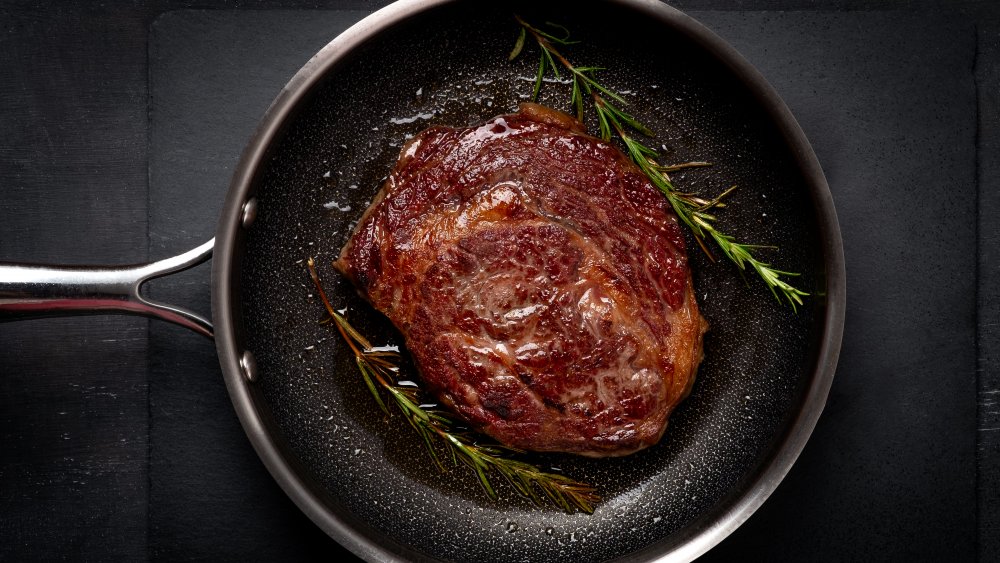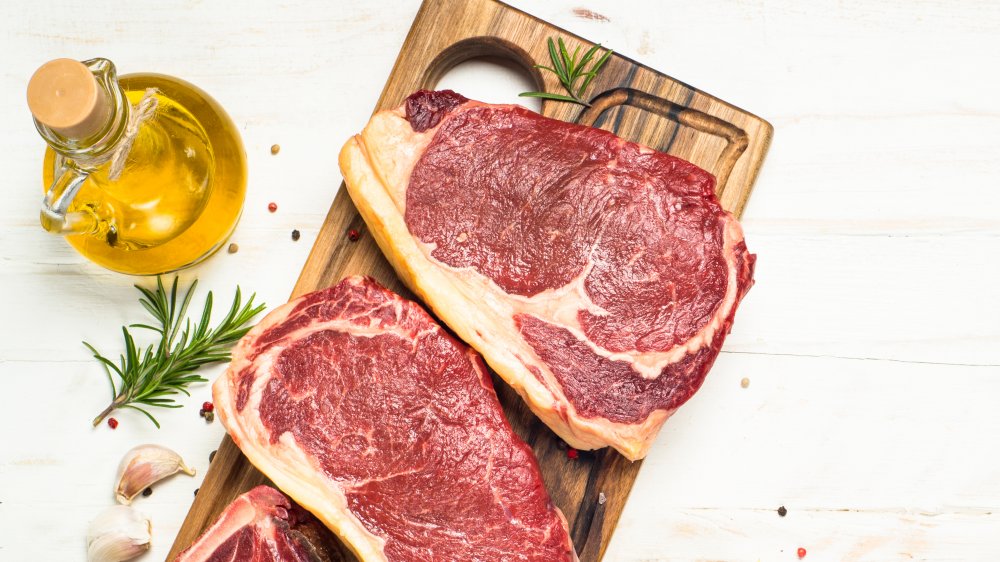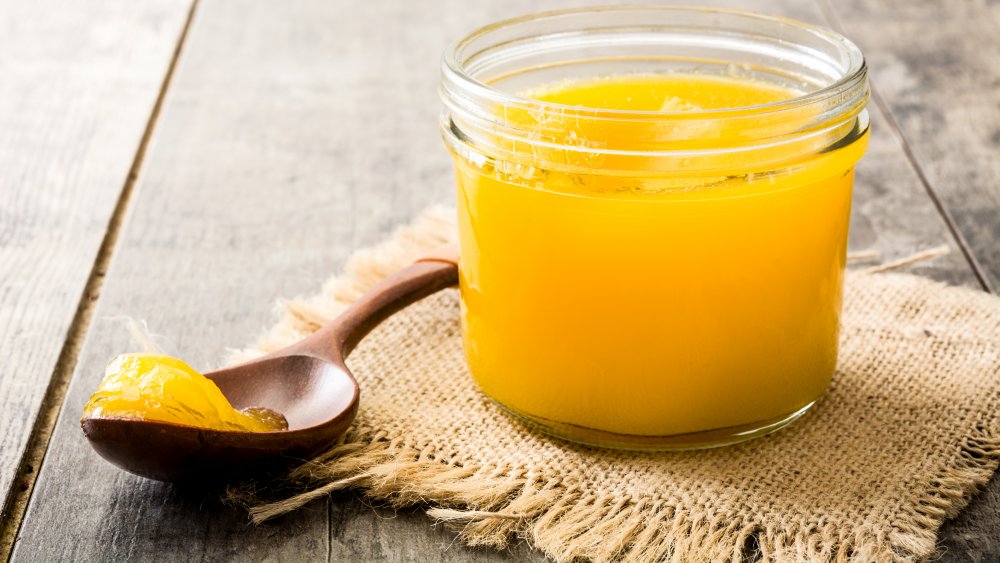Oil Vs. Butter: Which Is Better For Cooking Steak?
How many of us have stared hungrily at our TV screens watching a chef sear a big beefy steak to what looks like perfection and thought, "I can do that." It looks so easy, right? Hot pan, juicy steak, and a glug of oil for cooking. Or wait, was it butter? Does it even matter? It turns out, the choice between cooking your steak with oil or butter matters immensely, and one is a clear winner over the other.
Instinctively, we all may want to choose butter for its rich, creamy flavor. Unfortunately, this decision is not up to our taste buds. The choice all comes down to a number known as the smoke point. As the name suggests, the smoke point of a cooking fat refers to the temperature at which it begins to burn and put out smoke (via MasterClass). When a fat exceeds its smoke point, it breaks down and can release chemicals that impart burnt, bitter flavors that threaten to ruin our tasty piece of steak. A fat heated beyond its smoke point can also emit compounds that can harm our bodies.
So, when you pop that steak in the pan, and your goal is a nicely seared exterior, whatever fat you choose needs to be able to safely withstand the heat. According to Thermoworks, the surface temperature required to sear steak is between 400 to 450 degrees Fahrenheit. The question is, between oil and butter, which has a smoke point that falls within that range?
Cook your steak in oil for best results
Knowing that our perfectly cooked steak hinges on choosing a fat with a high smoke point, it makes the decision between oil and butter an easy one. According to MasterClass, butter has a super low smoke point of 302 degrees Fahrenheit. That's miles away from the 400 degrees Fahrenheit it takes to achieve a sear on our ribeye. And, if attempting to heat butter that high will release free radical cooties into the air and ruin the flavor of our meal, we'll gladly opt for oil.
So, which oil to choose? Unrefined oils that are bottled right after they've been pressed tend to contain lots of beneficial minerals and nutrients. They also retain some flavor from the nut, seed, or fruit they were extracted from. That sounds great but these oils tend to have a low smoke point compared to refined oils which have been filtered, bleached, or heated to remove reactive compounds. An unrefined oil like extra virgin olive oil, for example, has a smoke point of 325 to 375 degrees Fahrenheit whereas canola, vegetable, and peanut oils have smoke points between 400 and 450 degrees Fahrenheit. That's exactly the range we're shooting for, so the choice is clear: oil (with a high smoke point) is better for cooking steak. If you're beset by a craving for butter though ... there is one workaround.
Cook your steaks in ghee for buttery flavor
When you're really craving the fatty richness of butter with your steak, but know you need a something with a sear-worthy smoke point, not all is lost. Reach for ghee! Ghee has a surprisingly high smoke point of 485 degrees Fahrenheit (per The Spruce Eats), making it more resilient than any of the oils previously mentioned. Not only that, but its rich, nutty flavor gives you all the satisfaction of our old unrefined friend, butter, with none of the highly-burnable fat. According to USA Today, ghee is butter that's made by simmering regular butter to evaporate the water, then straining it to remove the fatty milk solids. The result is an extra-buttery-tasting clarified butter rich in vitamins and something called conjugated linoleic acid which has been linked to weight loss and cancer prevention.
A YouTube video from the food brand Pre shows that you can sear a steak in a couple of tablespoons of ghee, just as you would with oil, and even baste the steak at the end of cooking with herb-infused ghee for extra oomph. So, when it comes to cooking a great steak, oil is better than butter and ghee is a fine substitute for both.


